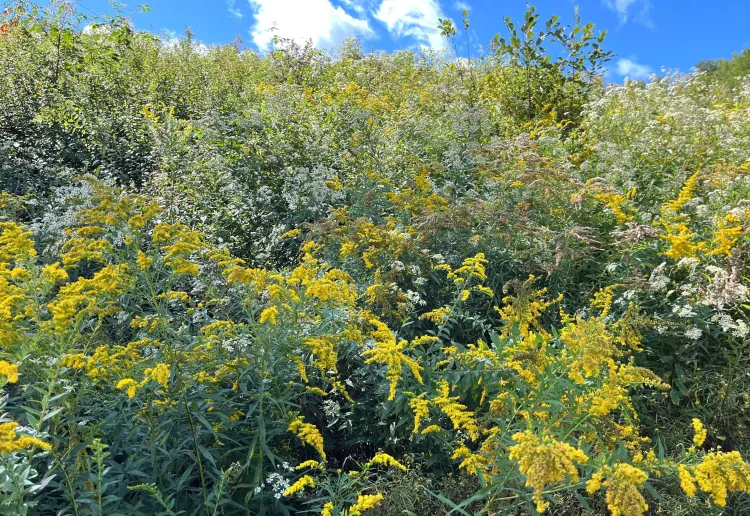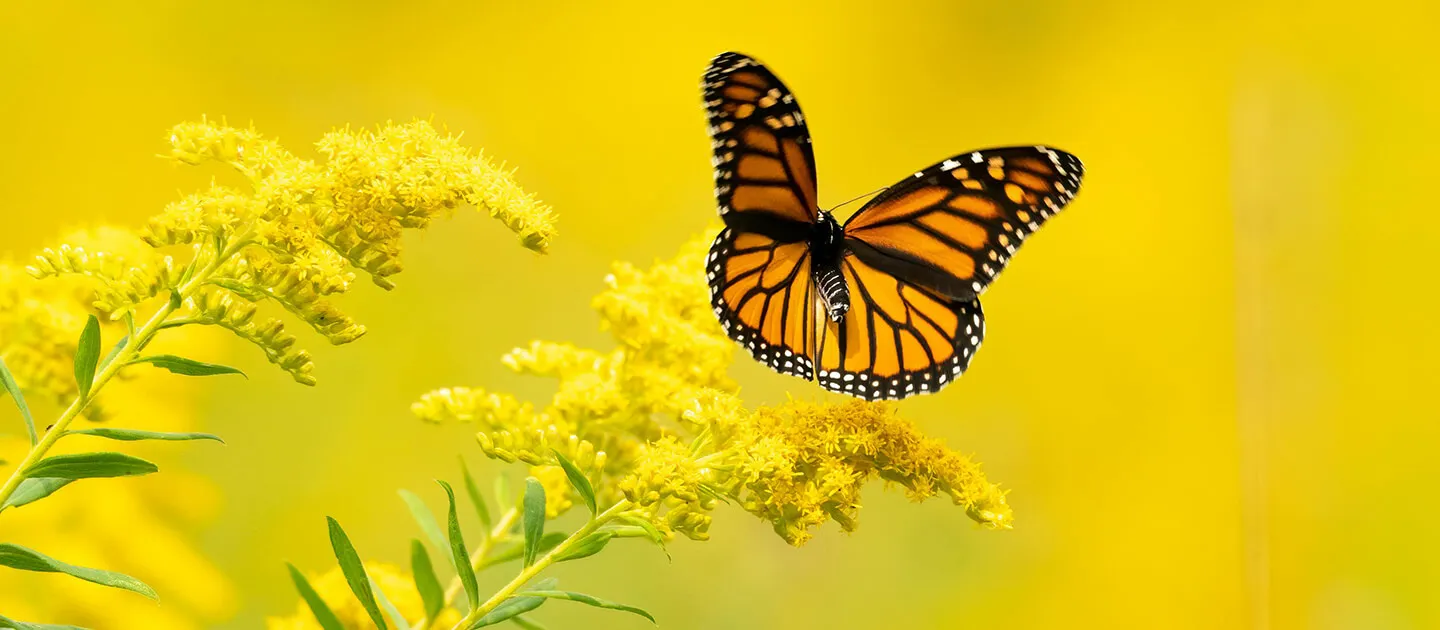Many common flowering plants that grow on roadsides and fields are more beneficial than you might think. One of these plants that you should consider letting flower this year is goldenrod (Solidago spp.).
Native to the Northeast, goldenrod is an incredible host plant for caterpillars and a pollinator plant for butterflies, bees and other pollinators. According to research from the University of Delaware, goldenrod is considered a “keystone plant” or one of a special group of plants that play a large role in overall ecosystem health, providing habitat to large numbers of insects.
Along with goldenrod, other keystone plants include oaks, willows, asters, wild plums, cherries, birch, pines, aspen and blueberries. These plants feed and house many species of caterpillars, which in turn feed birds who eat caterpillars for a great source of protein and fats for energy.
Insects and their caterpillars are critical to biodiversity and without them the earth wouldn’t be able to support as many species of birds. Allowing native plants to grow, even opportunistic ones like goldenrod, help to support this interconnected web of species.

While there are many species of goldenrod, one of the more common species in the Vermont area is Canadian goldenrod (Solidago canadensis). It grows 4 to 5 feet tall, with bright yellow, arching panicles of blooms that almost look like fireworks frozen in time.
Goldenrod, which grows best in full to at least partial sun, prefers well-drained soils. It has rhizomes that make it very effective at spreading, which is something to keep in mind when considering whether you want goldenrod in your garden.
If you have a more natural-looking garden where plants blend together loosely, goldenrod would compliment this style. In a more traditional garden where each plant has its own distinct place, this might not be the best plant for those conditions.
Goldenrod gets a bad reputation as being responsible for seasonal allergies. In fact, this plant is pollinated by insects, not the wind, so its pollen generally does not irritate eyes and noses. Ragweed (Ambrosia artemisiifolia), on the other hand, is wind-pollinated, blooming at the same time as goldenrod, so it is the most likely allergen culprit in late summer.
Interestingly, while goldenrod is native to North America, it is considered invasive in Europe and China. It is important to keep this in mind when thinking about the potential spread of introduced invasive species. Many countries have shared plants back and forth over the years, so it is a widespread, human phenomenon to have plants from one part of the world get a little too comfortable in another area.
You can also let goldenrod grow where it chooses, such as in meadows, fields and at the edge of roads. You will be supporting a vast ecosystem of insects and birds that rely on plants like it for food and habitat. If desired, goldenrod plants or seeds can be purchased at native plant nurseries.
For help identifying pollinator plants or other gardening questions, contact the University of Vermont Extension Master Gardener Helpline at (802) 656-5421 (Thursdays, 9 a.m. to 12 p.m. through October 30) or online year-round at https://go.uvm.edu/gardeninghelp.
